Curious to find out what to expect in the Falklands? I’m sure you already know about penguins and landscapes – here are 15 curious facts about the Falkland Islands you may not be aware of!
Yes, the Falkland Islands are a place unlike any other. A little slice of Britain in the South Atlantic – some fellow tourists described it as “just like the Scottish Highlands, but with penguins”. Just check out the picture below to get an idea of the vibe they referred to – even though I was lucky to have bright sunshine 6 out of the 7 days I was there!
The stunning landscapes and close wildlife encounters are the main reason for most people to visit the Falklands. The unofficial tourism motto is “where wildlife comes to you” – the absence of ground predators and invasive species on most islands means that penguins and other birds are blissfully unafraid and not really bothered by visitors.
The wildlife experience exceeded all my expectations, but one of the highlights of my week in the Falklands was meeting locals and getting to know about their life on the edge of the world.
I had never been anywhere that remote, with such a unique history and culture, so I decided to put together this post as a kind of mixtape of random curious facts about the Falklands that surprised me – some history, some anecdotes, some culture and so on. Let’s go!
1) A Diverse Community
The Falkland Islands are a British Overseas Territory, which means that Falklanders are British citizens. Falkland society is surprisingly diverse, with people of 68 different nationalities – from countries as far afield as Costa Rica, Chile, Zimbabwe, Croatia, the Philippines and many more.
The Multicultural Falklands event held in April, is organized to showcase the culture, food and dance of different communities living in the Falklands.
To know more about people living in the Falklands, check out this leaflet with the life stories of some Falkland residents.
2) Home of Many Saints
The largest community (about 10% of approx 3200 residents) is made up of people from Saint Helena, called “Saints”.
In case you’ve never heard of it, Saint Helena is a volcanic island in the South Atlantic, located about 6000 km northeast of the Falklands, closer to the coast of Namibia and Angola, known for having been the place where Napoleon Bonaparte got exiled after being defeated at Waterloo.
Saint Helena is also a British Overseas Territory, and Saints were the first to respond to the Falklanders’ call for help during the 1982 conflict. Some moved to the Falkland permanently after the war, others later, attracted by employment opportunities in the farming, fishing and tourism industry.
3) “Camp” and “Settlements”
In the Falklands, you’ll definitely hear the word “camp”. No, this has nothing to do with camping or summer camps – “Camp” is the the term used to refer to the countryside, from the Spanish “campo”.
As a guideline, anywhere outside of Stanley is Camp. This includes the rest of East Falkland, the whole of West Falkland, and the other 776 islands. Stanley is the only real town, the rest are known as “settlements”.
The term Settlement is used to describe hamlets like Port Howard or Fox Bay, home to a few dozen people, as well as places with just a house or two on smaller islands like Bleaker, where normally there’s just one resident family.
4) Sports Week
I heard passengers mentioning Sports Week during one of my flights around the Falklands, and as a sports lover, I was really curious! I expected some kind of Falkland Olympics, with track and field, swimming and other sports being held in scenic locations with a mix of penguins and people as spectators.
In the Falklands, “sports” are events related with farming activities. Sports Week is organised yearly in late February in both East and West Falkland, to celebrate the end of the shearing season, and includes treasure hunts, horse racing and gymkhanas, dog trials, treasure hunts and more.
5) Christmas Shearing Competition
Sheep farming is historically the main activity in the archipelago, and reason why many islands are inhabited – so it comes as no surprise that many Falkland events are sheep related.
Another important yearly appointment is the Christmas Shearing Competition, including various categories and challenges for the fastest shearers. The event is the final of a competition series held in several locations around the Falklands, and the winners qualify for the World Shearing Championship in New Zealand.
Just in case you were wondering how long it takes an experienced shearer to cut all the wool off a sheep, the answer is less than a minute!
6) Penguin Eggs and Other Delicacies
This was one of my favourite curious facts about the Falklands, and I asked pretty much everyone I met whether or not it was true. Falklanders do eat penguin eggs – there’s actually a quota of 100 eggs every year per person, and residents know when it’s safe to harvest eggs without impacting penguin populations.
Penguin eggs are very nutritious and last longer than regular eggs. They have a deep red yolk and transparent whites, looking really unusual when hard boiled. According to a local, they are especially good with Worcestershire sauce!
You won’t find penguin eggs on menus, and penguin meat is not traditionally eaten – apparently, it’s really dark and stringy, with a strong fish smell.
7) Time for a Smoko
Farming life in the Falklands was made of long and tiring days, especially in summer. Three meals a day were not enough to get the necessary energy, so there were two extra breaks in the morning or afternoon, known as smoko.
Workers would stop for a cigarette (hence the name), plus a snack of cake, biscuits and coffee or tea. The smoko tradition lasts to this day in the Falklands – anywhere you go around camp you’ll be offered homemade cake, biscuits and other delicacies. You won’t go hungry, trust me!
8) Most Southerly Certified Marathon
As a marathon runner, I was very happy to hear there’s a marathon in the Falklands!
Stanley Marathon is often described as the southernmost marathon in the world – that is actually incorrect, as the record belongs to the Antarctic Ice Marathon,
However, if you can’t quite spare the $22k to run the Antarctic Marathon, you’ll be happy to know that Stanley is indeed the southernmost certified marathon according to AIMS – and the entrance fee is just £50!
Stanley Marathon is organised by the Standard Chartered Bank, and the 2025 edition will be the 20th. The race includes 4 laps around Stanley and surroundings, and it’s considered to be a difficult marathon because of the terrain and challenging weather.
9) Flying Taxis
If you’ve read our post about how to plan a trip to the Falklands, you’ll be familiar with FIGAS, the Falkland Islands Government Air Services. FIGAS operates 8-seater Islander planes, used to connect Stanley to smaller islands and Camp settlements.
FIGAS is a “flying taxi” service rather than an actual airline. There’s no set schedule or routes – flights are operated upon request, and because the weather can be really unpredictable in the Falklands, flight times are set just the day before.
Also, it’s not uncommon for planes to do one or more intermediate stops before reaching their final destination. The good thing is that planes fly low, so flights are really scenic – you might even see whales!
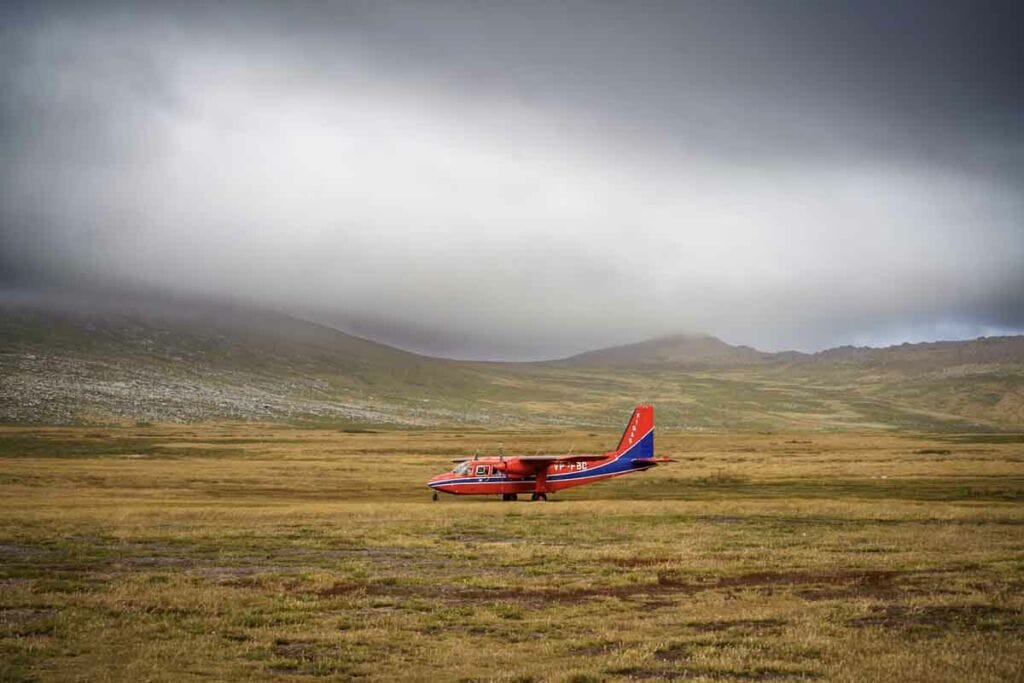
10) Life before FIGAS
FIGAS dates back to 1948, but most Camp airstrips were built after the 1982 war, and most Islander planes were purchased in that period. So, how was life in remote locations and islands before then?
From the 1960s onwards, FIGAS used to fly floater planes, but connections were a lot more sporadic since floater planes are harder to fly in windy and stormy conditions. Before then, a fleet of boats sailed between the islands, carrying passengers and cargo, but only called at the remotest islands once or so a month.
On Sea Lion Island, I read on a book about the island’s history that in the 1950s, boats came to the islands only to deliver two or more pieces of mail. “Boat day” was a bit like Christmas for people living on remote islands – so, looking for a little company and trying get the boat to come more often, islanders would subscribe to at least two magazines at a time!
11) A Cruise Ship Adventure
To this day, the majority of people visiting the Falklands do so as part of an Antarctic cruise. Stanley harbour is too small for large ships to dock, so they drop anchor at the entrance of the harbour and passengers are ferried in on tenders.
Most passengers then spend the day exploring Stanley or taking trips to nearby locations. During storms or high winds it’s impossible for passengers to land – I was told that there’s usually a 50/50 chance, because the weather is often unreliable, even in summer.
One day in the early 2000s, a whole boatload of passengers had the adventure of a lifetime. While over a thousand or more people were still on the islands, the weather changed suddenly and the captain had to recall all the tenders. The passengers were stuck in Stanley for the night, unable to reach their cruise ship.
Now, remember that Stanley back then was home to just 2000 people, so they had to host about 500 people in a town that only had one hotel and a couple of guesthouses. The entire community came together, opening gyms, community centres and private homes to accommodate the stranded passengers, who were finally able to return to their ship the following day.
The whole of Stanley still remembers that night – and for the passengers, it was the highlight of their trip!
12) Wreck Cemetery
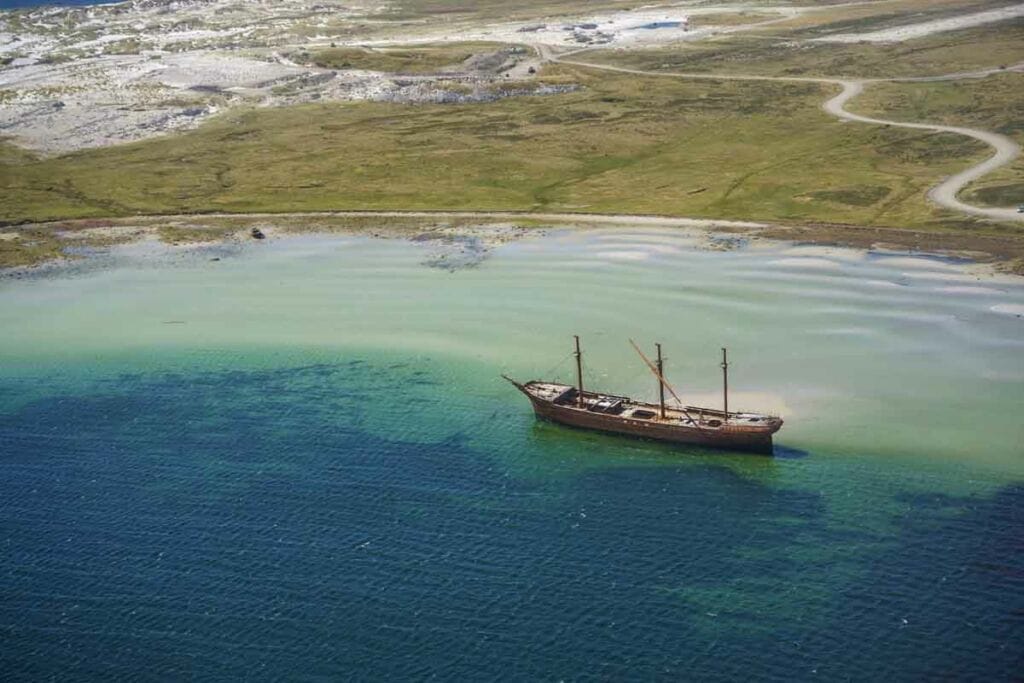
If you like wrecks, you’re in the right place! Stanley Harbour is the largest graveyard of 19th century vessels in the world, with the remains of over 20 ships in different states of conservation.
Some sank there, others were towed to Stanley after being damaged while rounding Cape Horn, as it was the closest port. Impossible to repair, some vessels were condemned and just left there, where they remain to this day.
Walking down the Stanley waterfront, you can see many of these wrecks with information plaques about how they came to their demise. Otherwise, this interesting article describes all of them. Make sure you don’t miss the Lady Elizabeth, beached on Whalebone Cove, on the way to Stanley Airport.
13) Native Trees
There are no native trees in the Falklands, and the vegetation is reminiscent of that of Patagonia, with hardy shrubs that resist the strong winds. There are also some heather bushes and native berries – you might find teaberry and diddle-dee berry jam as part of smoko spreads around the islands.
Now, that is not to say you won’t find any trees! There are indeed trees around the islands, for example there’s a small patch of trees near the Settlement on Carcass Island, but they have all been planted with seeds from somewhere else.
14) People vs Sheep vs Penguins
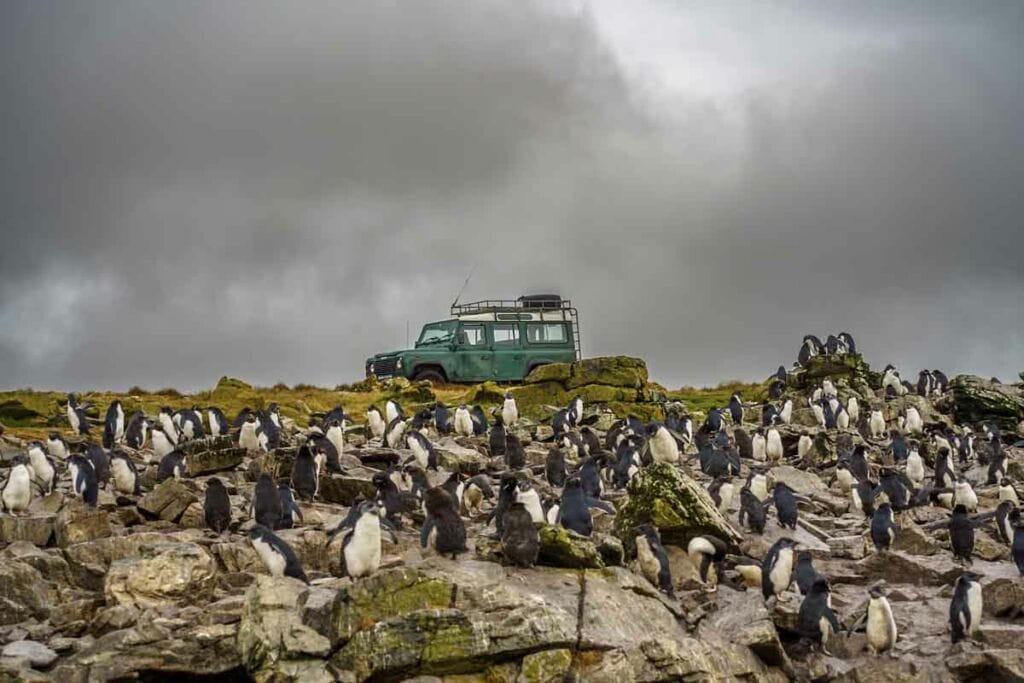
According to the latest census, the Falklands are home to approximately 3600 people, two thirds of which live in Stanley.
How many sheep, you may ask? Approximately 500,000 in 70 farms around the archipelago. Falkland sheep are of various breeds, the most common of which is Polwarth x Merino. There are also 3000 heads of cattle, mainly Aberdeen Angus.
And how many penguins? The number is harder to estimate since many penguins are not in the islands year round, but it’s believed to be about one million, including the largest Gentoo penguin colonies in the world!
15) Fish and Fishing Licences
As I mentioned before, the sheep farming industry was historically the most important in the Falklands. In the 1980s, a decline in the prices of wool due to the competition of synthetic fabrics meant that sheep farming was no longer profitable enough to support the islands, and it was necessary to look elsewhere.
Nowadays, the sale of fishing licences and more generally the fishing industry contributes to about 60% of the Falklands’ GDP. Vessels from as far afield as Taiwan and Vietnam travel to the islands to catch species like squid and Chilean sea bass, still plentiful in this sub-antarctic waters.
However, most fish and seafood caught in the Falklands is exported, with 82% of Falkland squid going to Spain alone. Very little is consumed on the islands – You’ll find plenty more meat-based dishes than fish on restaurant menus, but that might change in coming years.
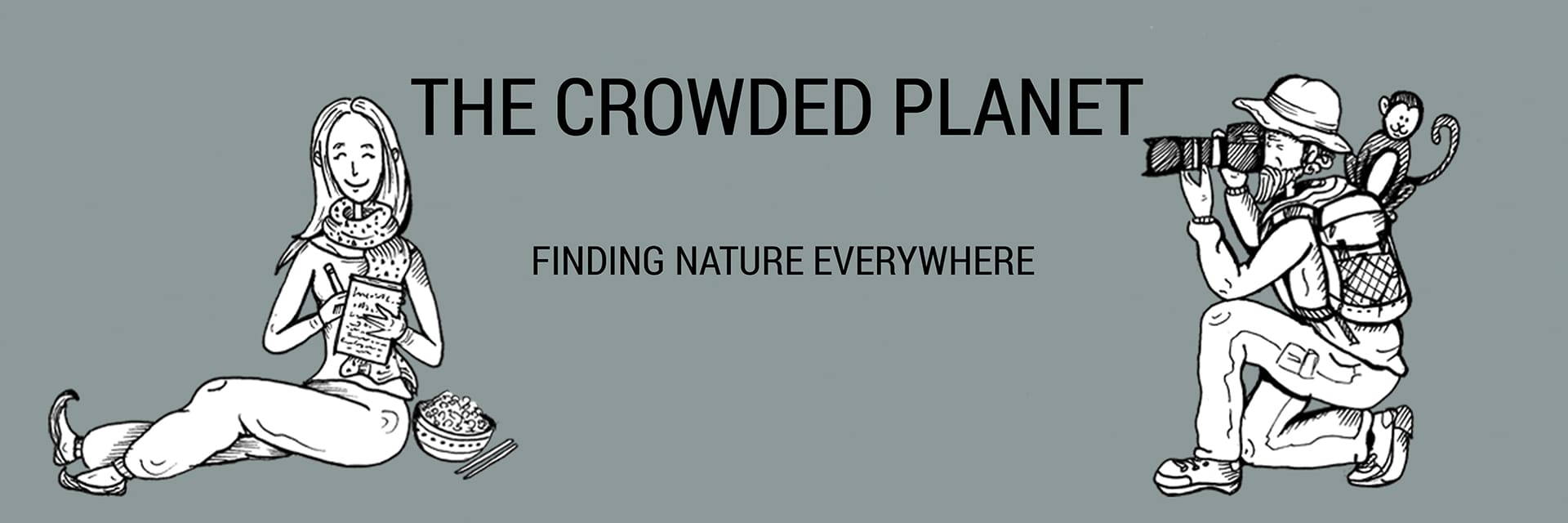
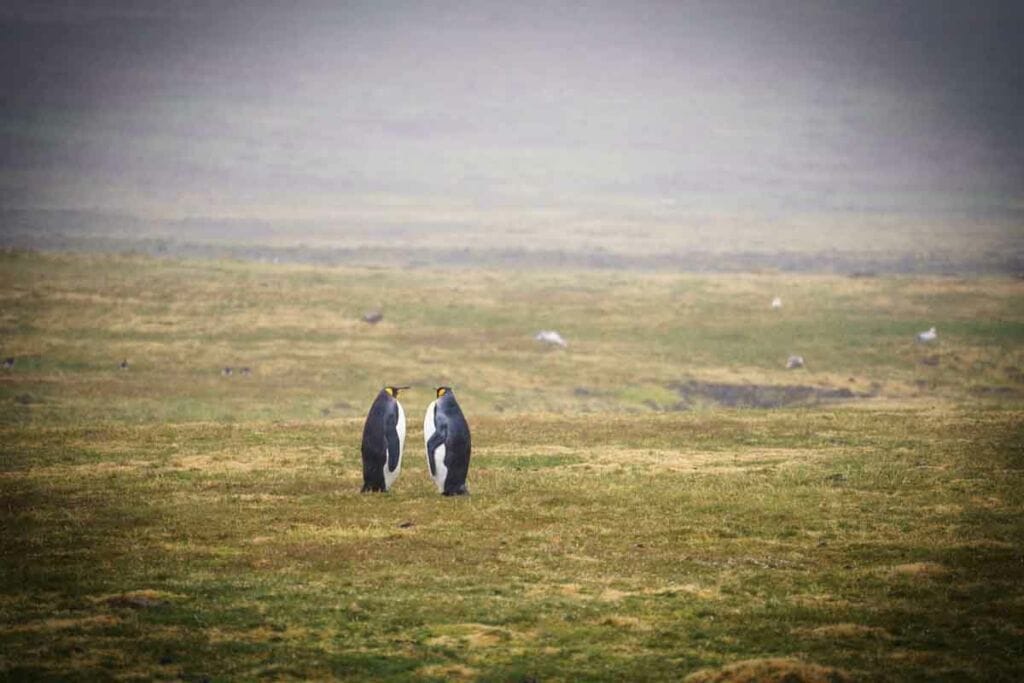
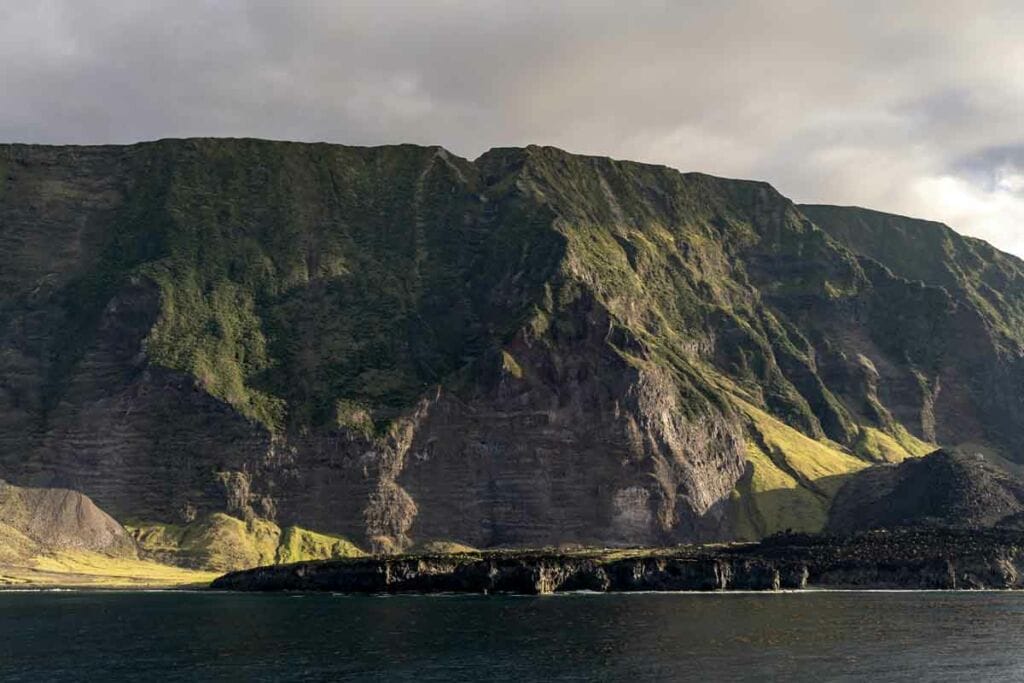
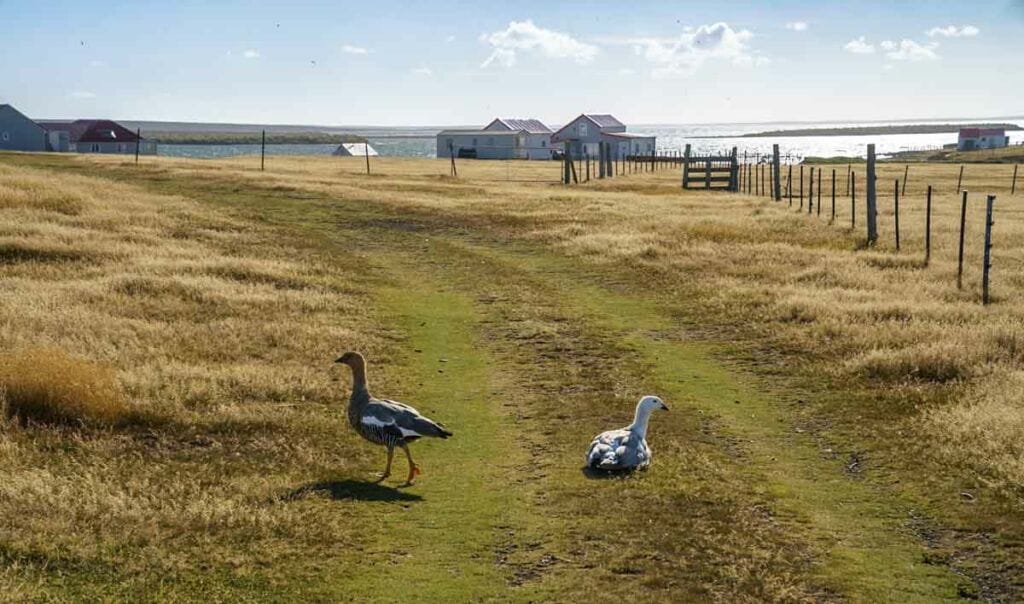
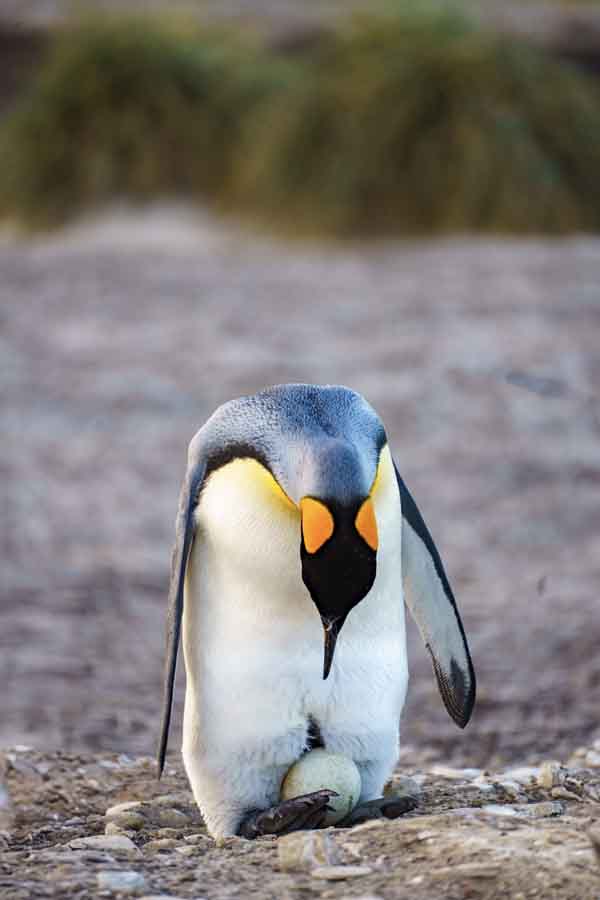
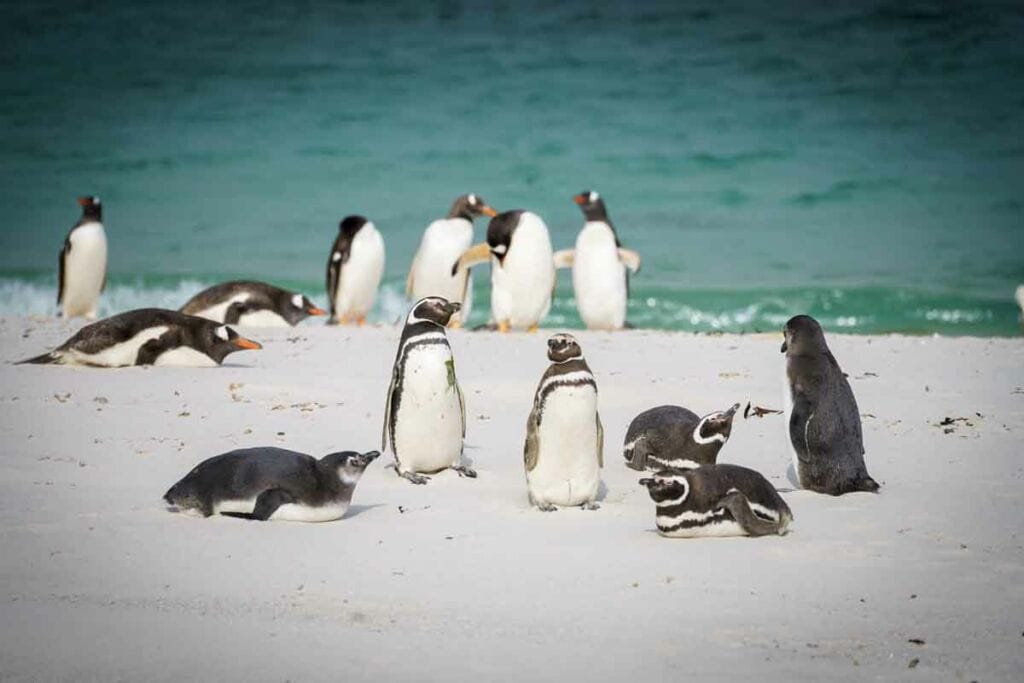
The Falkland Islands are full of surprises, from their diverse community to the unique wildlife interactions. I was especially intrigued by the penguin egg tradition and the shift from sheep farming to a fishing-based economy. It’s fascinating how the islands have adapted while preserving their distinctive way of life.
Thank you! Yes, we completely agree – what a special place 🙂